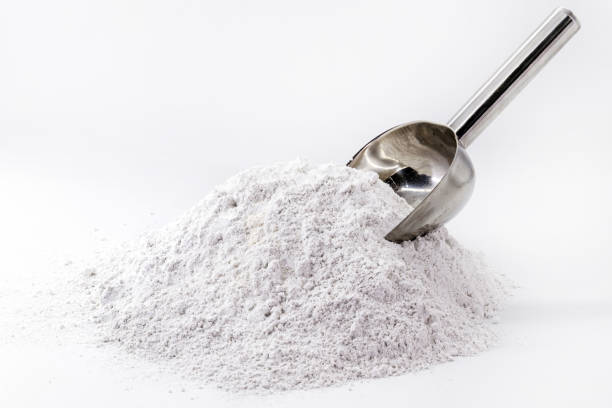Calcium hydroxide production method and its application in food field

Calcium hydroxide, also known as slaked lime or slaked lime, is generally in the form of powder, with a wide range of raw materials and low cost. It is widely used in food, medicine, chemical industry, drinking water treatment and other fields.
Calcium Hydroxide Production Method
Calcium hydroxide is obtained by the chemical reaction of calcium oxide and water. The raw limestone is cleaned and calcined at high temperature to obtain quicklime (calcium oxide). There are two processes for producing calcium hydroxide from quicklime: dry method and wet method.
Dry production of calcium hydroxide is a common processing method at present. It can realize automatic production, the production process is environmentally friendly, the output is large, the quality is stable, the calcium hydroxide produced has no impurities, and has good activity. It has gradually become the mainstream processing technology.
Calcium hydroxide products produced by dry process are more widely used than milky calcium hydroxide, mainly used in chemical industry, environmental protection, construction, food, medical and other fields, and storage and transportation are also more convenient.
Application of Calcium Hydroxide in Food Field
(1) Calcium
There are nearly 200 kinds of calcium preparations on the market, including calcium carbonate, calcium citrate, calcium lactate, and calcium gluconate. Calcium hydroxide is widely used as a raw material in the calcium production industry, among which calcium gluconate is common.
(2) milk powder
Calcium hydroxide, as an acidity regulator, can be used in milk powder (including sweetened milk powder), cream milk powder and its modulation products, infant formula food, and the usage amount is appropriate according to production needs.
(3) Rice tofu and ice jelly noodles
Use soaked rice, add water, grind into rice milk, add slaked lime water, stir evenly, heat, and stir until the rice milk is cooked and becomes thick. Pour the boiled rice milk into the mould, and after it is completely cooled, it can be cut into small pieces with a knife, and the rice tofu is made.
(4) Preserved eggs
Slaked lime, soda ash and plant ash are used as raw materials to make a paste and wrap it on the surface of the egg. After a period of time, it becomes a preserved egg that can be eaten directly through chemical action. When the protein encounters a strong alkali, it will gradually become clear water. If the alkaline solution continues to enter the egg through the semi-permeable membrane, the alkalinity will continue to increase, and the basic protein molecules will begin to polymerize and the viscosity will gradually increase, turning into a gel and forming preserved eggs. If the alkali is excessive, it will be detrimental to the quality of preserved eggs.
(5) Konjac food
There is a history of 2,000 years in the folk production and use of konjac gel food in our country. The production method is to add 30-50 times the amount of water to konjac powder, stir it into a paste, add 5%-7% calcium hydroxide of konjac powder, mix and solidify And get.
(6) Sugar production
In the process of sugar making, calcium hydroxide is used to neutralize the acid in the syrup, and then carbon dioxide is introduced to make the remaining calcium hydroxide precipitate and filter out, so as to reduce the sour taste of sugar. It can also combine with sucrose to form sucrose salt, so it can be used for molasses desugaring or sugar refining.
(7) Others
Calcium hydroxide is used as a buffer, neutralizer, and curing agent for beer, cheese, and cocoa products. Because of its pH adjustment and coagulation functions, it can also be used in the synthesis of medicine, food additives, high-tech biomaterial HA, feed additive VC phosphate, and calcium naphthenate, calcium lactate, calcium citrate, and Additives for sugar industry, water treatment and synthesis of other high-grade organic chemicals. It is helpful to prepare acidity regulators and calcium sources such as edible meat semi-products, konjac products, beverage products, and medical enemas.
